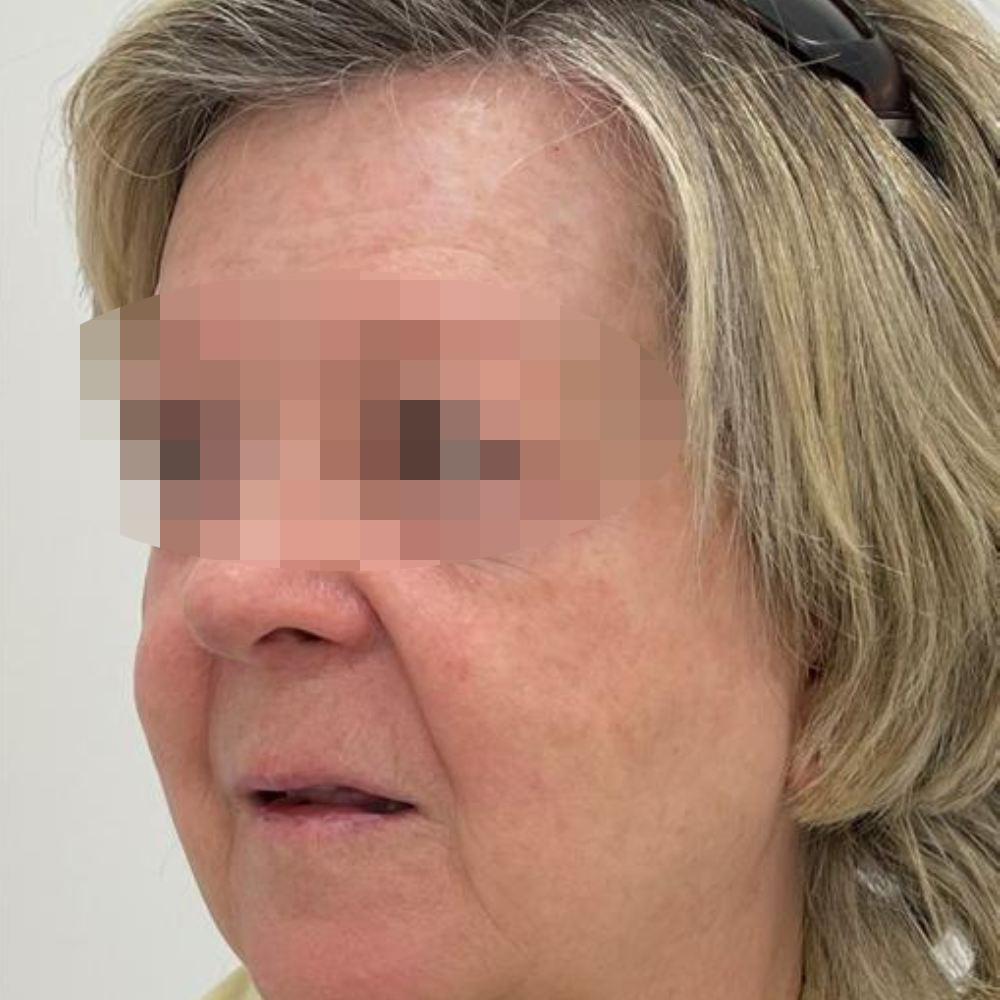Redness in the sebaceous areas of the face is known as rosacea. Patients may have pimples as in acne but, unlike acne, the undertone is pink and gets worse as we age. Our dermatologists are specialists in treating all types of rosacea in London with a specific treatment programme for each patient. Make an appointment now so that we can evaluate your particular case.
What is rosacea?
Rosacea, or acne rosacea, is an inflammation of the sebaceous follicles. Unlike acne vulgaris, rosacea produces small red pimples in the most sebaceous areas of the face. People with rosacea suffer from outbreaks that worsen with age, they have skin that is very sensitive to cosmetics or creams and become red easily.
It is true that there is no specific test to diagnose the disease. It is the specialised doctor who will examine the skin and determine the diagnosis based on the patient’s history and symptoms. He or she may also order further tests to rule out other conditions, such as lupus or psoriasis.
Types of rosacea on the skin
Rosacea can be classified into four types depending on its stage or course:
Erythematous
This is rosacea that manifests itself only in the form of redness on the patient’s face. It occurs in the earliest stages and in young people. In dermatology, the word erythema means red.
Papulosa
Appears in the middle ages of life when a Demodex infection occurs. It is sometimes also called acne rosacea. This type of rosacea consists of acne-like pimples with a reddish undertone.
Couperosis
This is a descriptive term, as there is no such disease as couperosis. The name means «pink cheek» and is caused by menopause, frequent alcohol intake or seborrheic dermatitis.
Rhinophyma
As rosacea progresses, the pore dilates, the sebaceous gland becomes overactive and the surface of the skin is altered, although it is most common on the nose. It is usually accompanied by small veins.
Causes of rosacea
Triggering causes of rosacea are:
Rosacea treatment in London
At De Felipe Dermatology Clinic we combine the following procedures to cure rosacea:
Cause: High sebum production
RETINOIDS
These are substances derived from vitamin A. Vitamin A is the alcoholic form: retinol. An acid derivative of it is the retinoic acid, and an isomer of it is 13-CIS retinoic acid. They can be applied or taken on prescription, although they have two major drawbacks: they are teratogenic – they cannot be taken by women who may become pregnant – and they are irritating in large quantities.
Retinol in rosacea has 4 effects:
Cause: Skin sensitivity
MICRODERMABRASION
With the aim of alleviating irritation and combating skin sensitivity, we perform microdermabrasion sessions to strengthen and thicken the epidermis and reduce seborrhoea and surface acidity. It is performed using a small instrument that absorbs dead cells and treats the skin with aluminium or zinc oxide microcrystals.
These are the advantages of microdermabrasion:
Cause: Vascular lability
IPL LASER
We use vascular lasers of the IPL type to reduce excess blood in the skin. The device emits light waves that are absorbed by the haemoglobin or melanin. In this way, we treat the vessel lining and fragment the pigment (melanin). These small vessels and the melanin pigment are reabsorbed by the body, making them less visible.
The advantages of using the IPL laser to eliminate rosacea are:
Cause: Infection with Demodex parasite
PHOTOBIOLOGICAL THERAPY
To eliminate Demodex infection, we can use antibiotics and photobiological therapy. This technology causes an increase in blood flow to the face, which has anti-inflammatory, bacteriological, regenerative and depigmenting properties. The light emitted activates photoreceptors inducing a series of biological responses that regenerate the skin.
The benefits of red and blue light for the treatment of rosacea:
Rosacea treatment price in London
The price of the different procedures for the treatment of rosacea is as follows:
Maintenance programme
After the attack programme, where the patient has improved substantially but still has a tendency to develop rosacea, a maintenance programme should be carried out, which can last between two and four years:
Rosacea before and after
Rosacea is not a disease that can be considered serious, but it has an aesthetic component that can be an important emotional burden for the patient. For this reason, our doctors have designed a programme of attack against rosacea through which very satisfactory results have been obtained. In these three cases we have managed to reduce the symptoms, lengthen the periods of inter-crisis and improve the aesthetic aspect considerably. All of them continue with a maintenance programme and have not presented any more rosacea outbreaks since then.






Frequently asked questions about rosacea
The most frequently asked questions about rosacea treatment in London are the following: